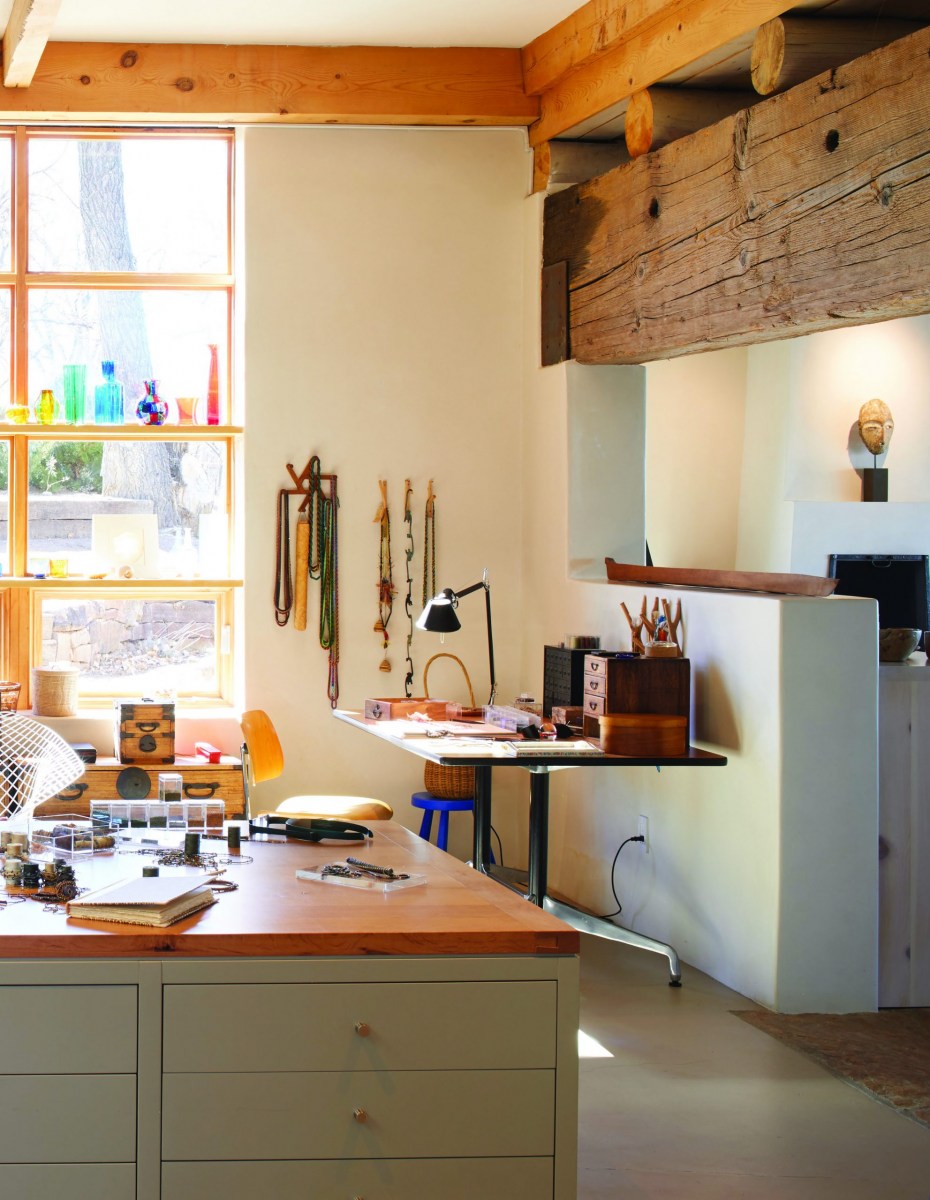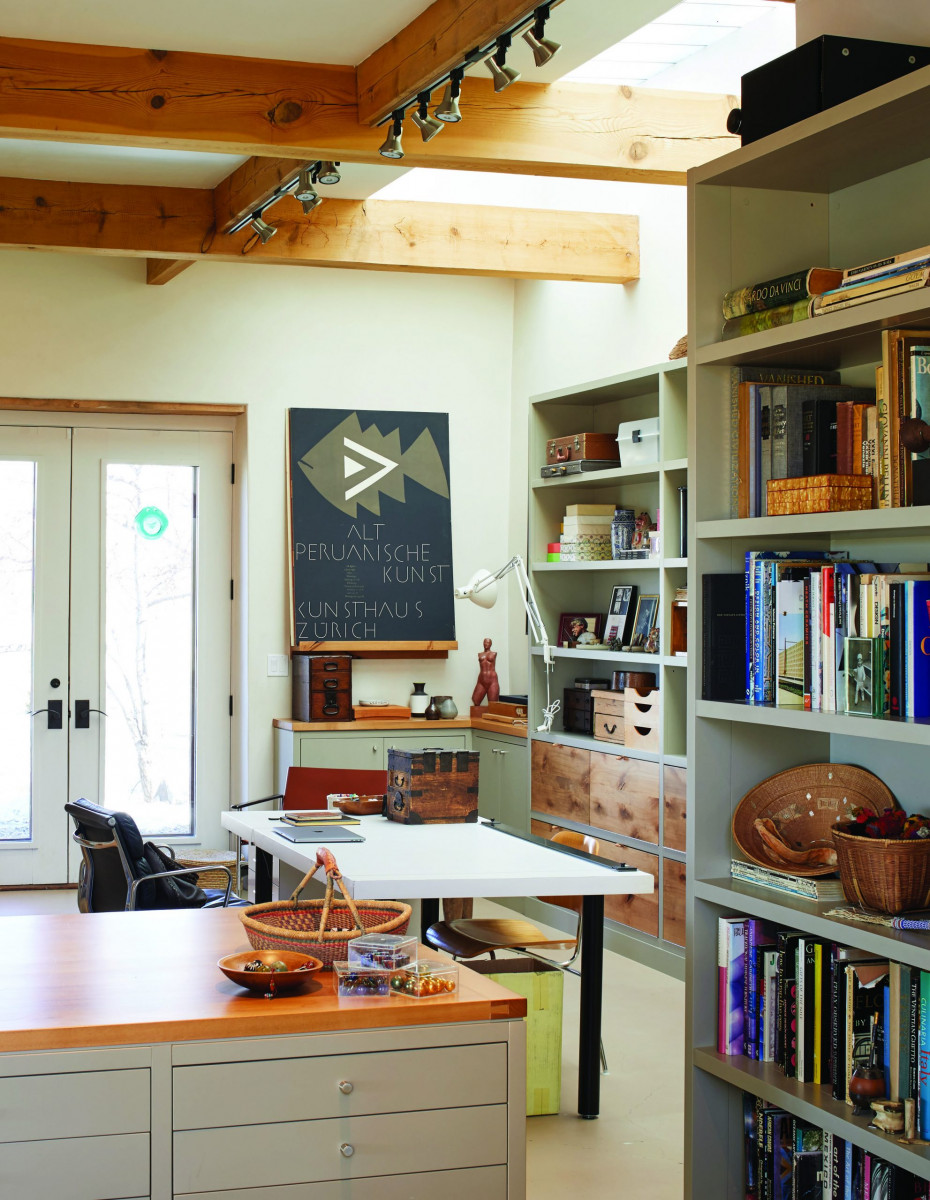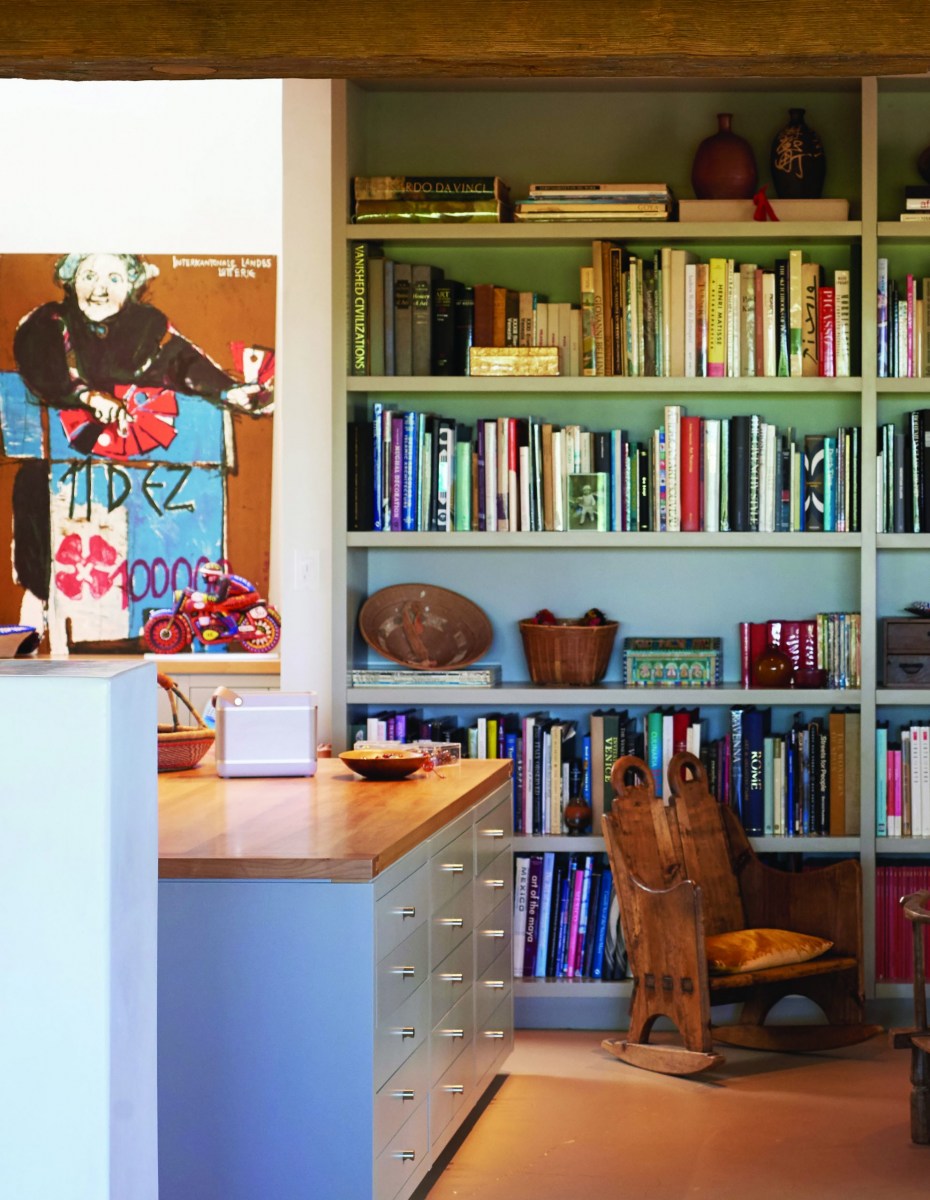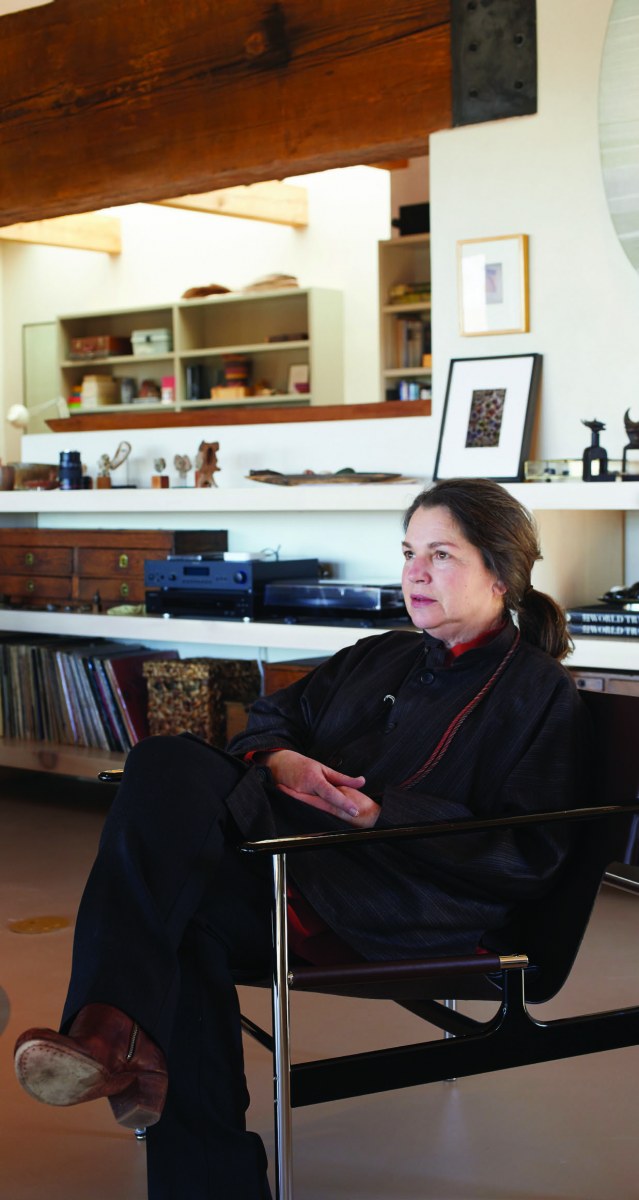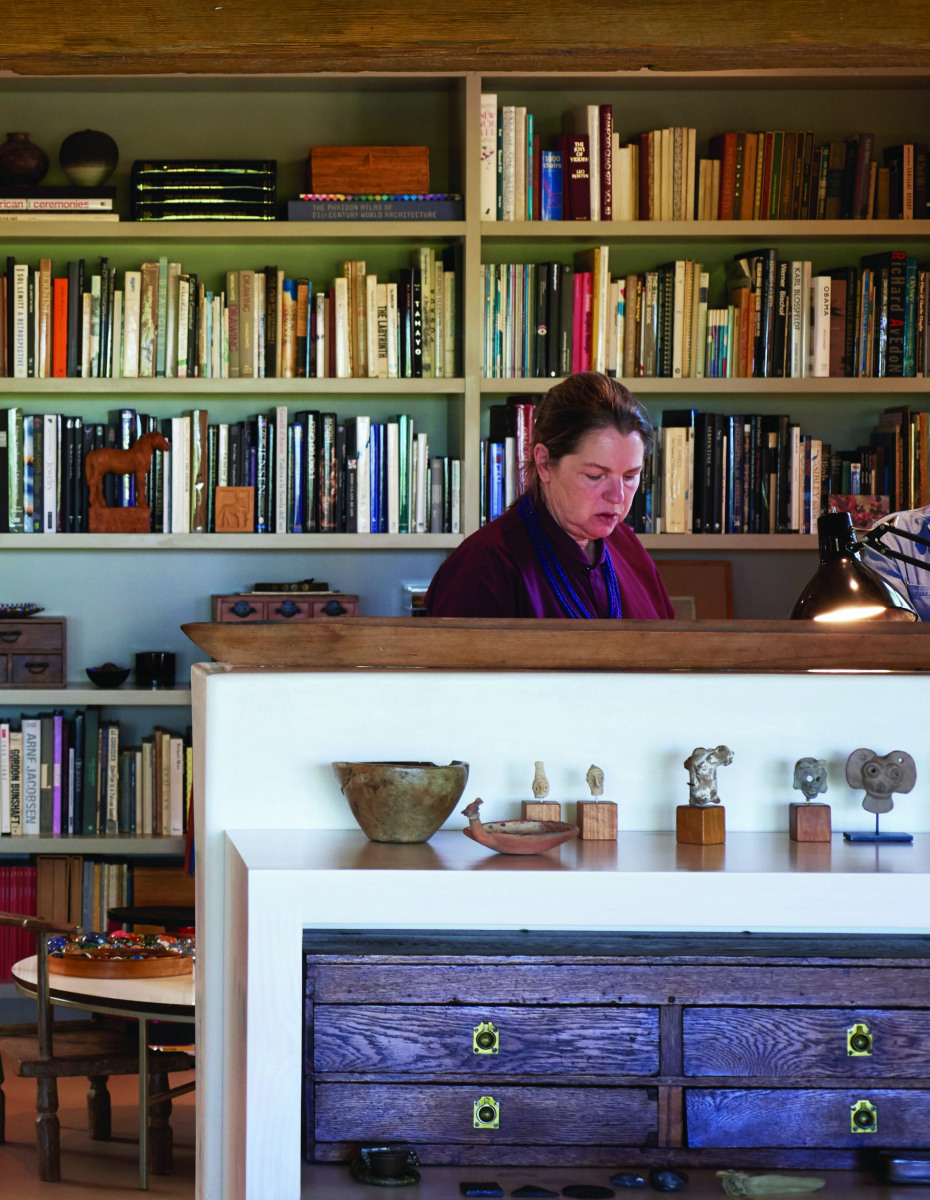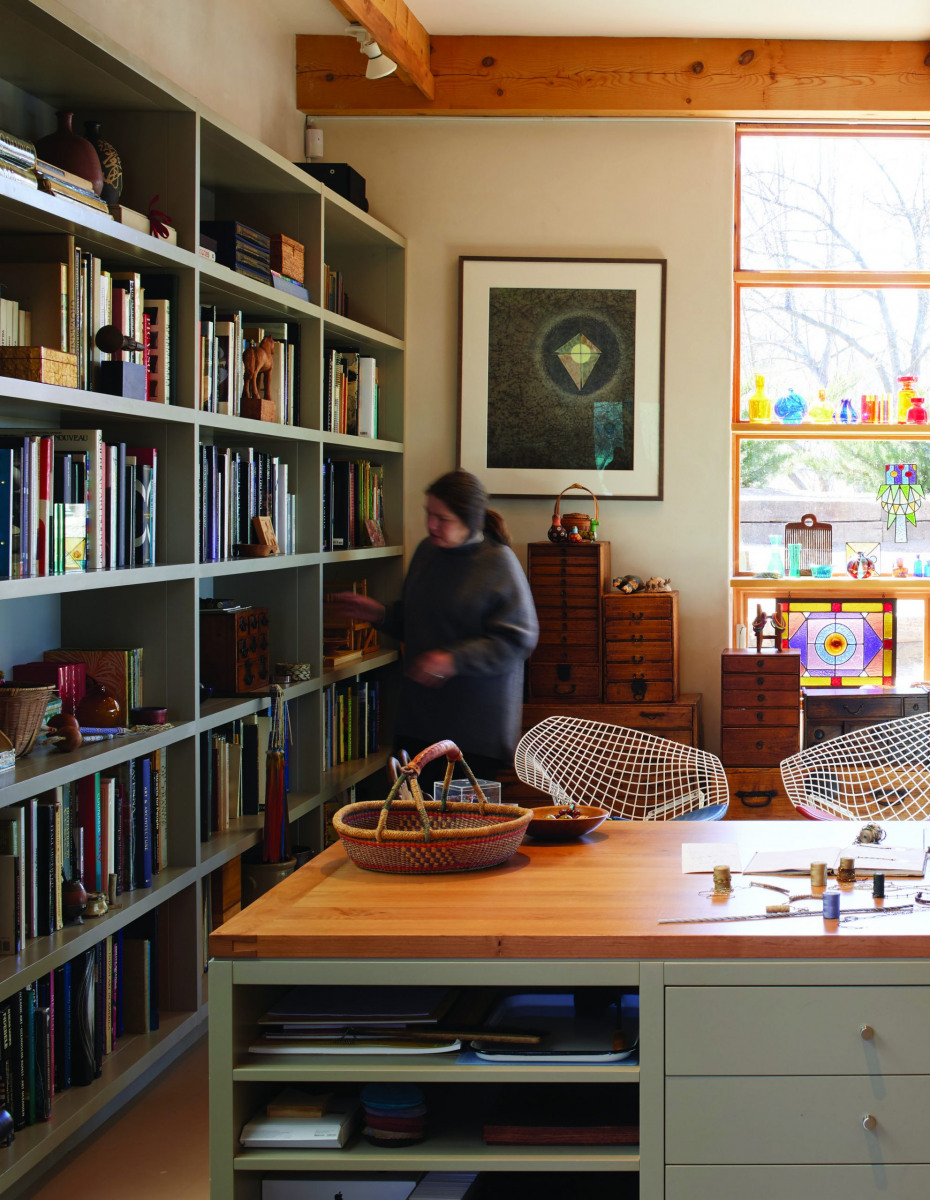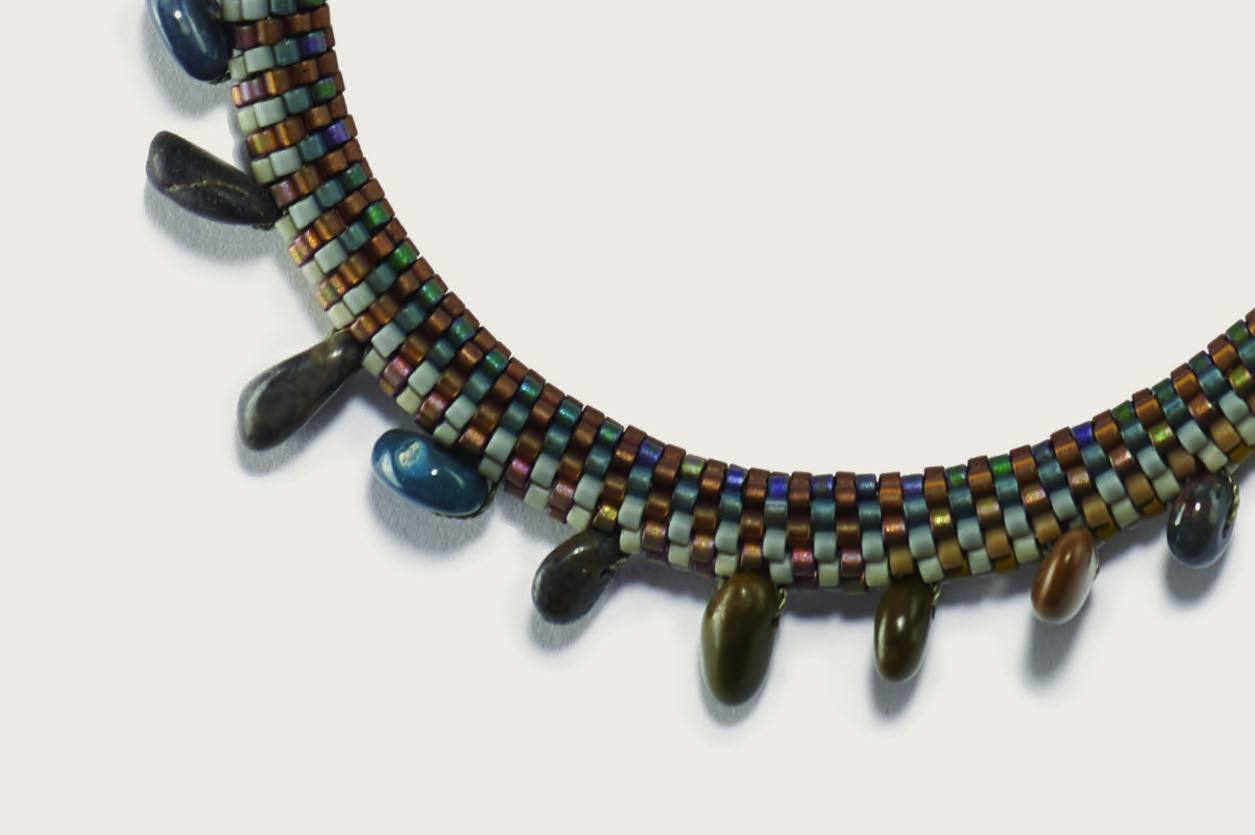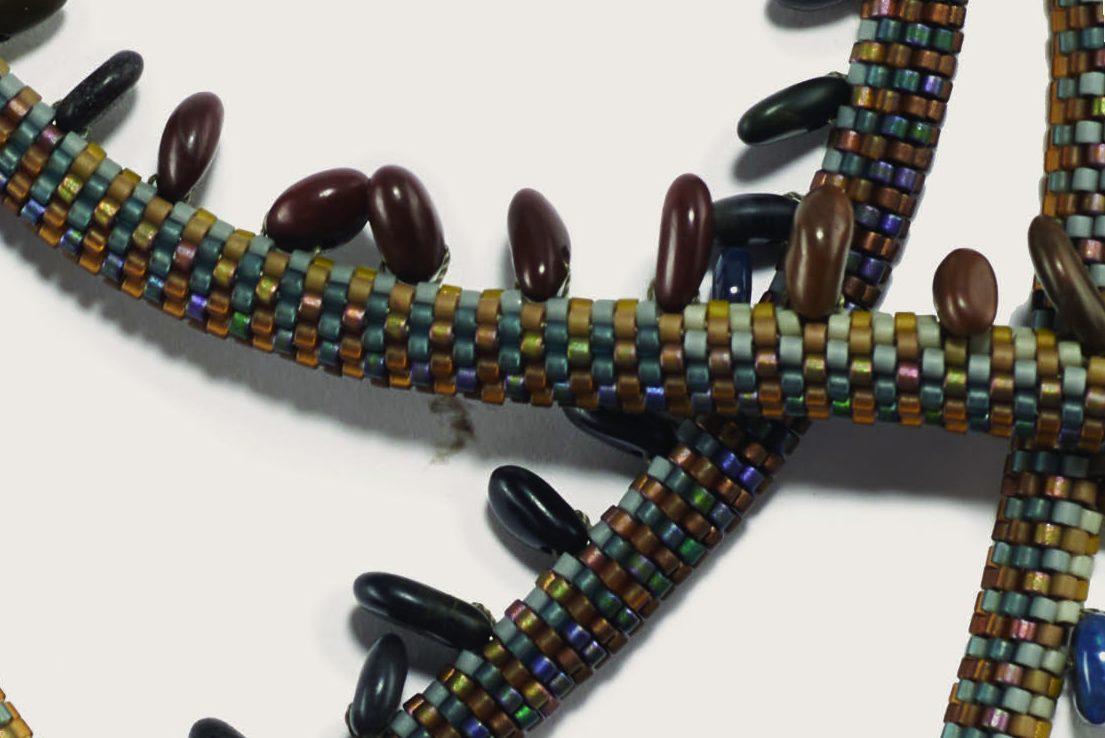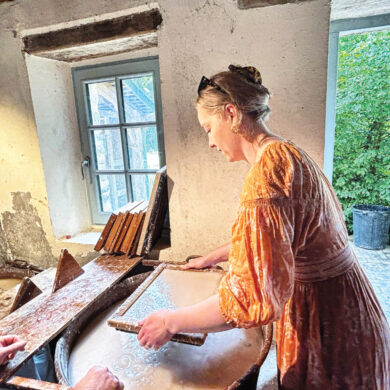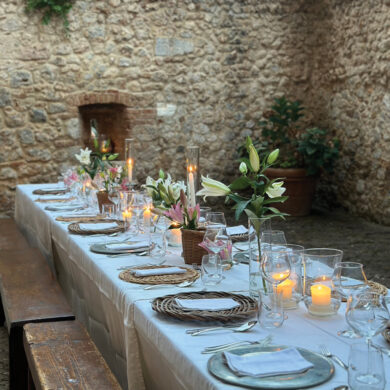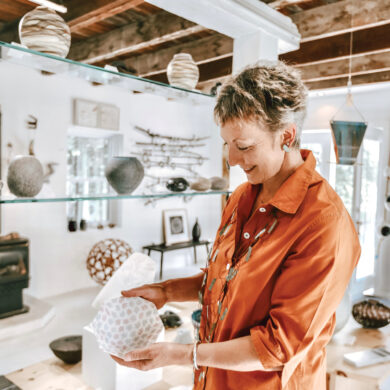I came to beadwork because my mother had a collection of bead crochet necklaces in vibrant colors that were made in Greece. She wore them every day. I loved them and wanted to learn how to make them. I took a class at a local bead shop thinking bead crochet would be a hobby, but it developed into something more.
I left my family’s home to attend Stanford and, after graduation, worked at the San Francisco offices of the architecture firm Skidmore, Owings and Merrill. While there, I was able to explore my interest in pattern through the development of building exteriors, paving pattern, interior design and architectural graphics treatments. I started to see design as a kind of mosaic where numerous smaller units could come together to create a whole piece that would progress and change over a larger composition.
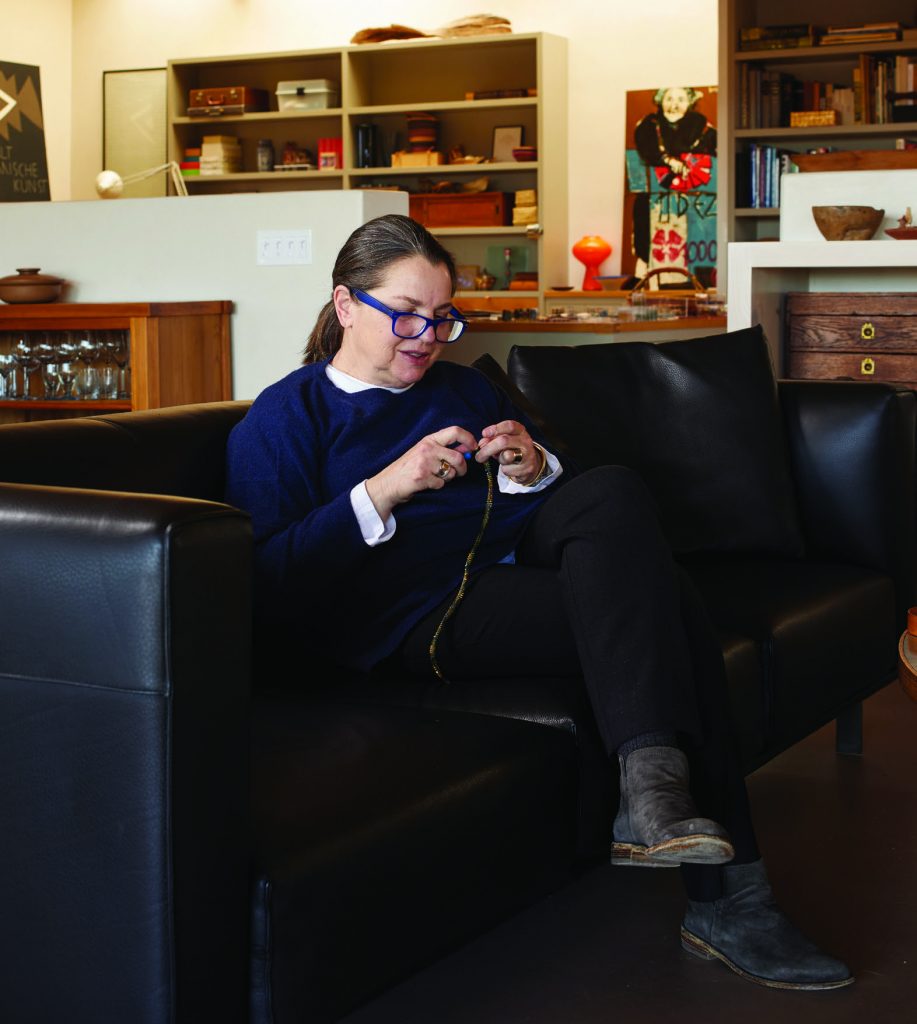
Afterwards, I went to work in water feature design for a company called WET. Our team created one-of-a-kind installations worldwide with scale and design that had never been seen before. Our installations included the Los Angeles County Music Center, the fountains at the Bellagio in Las Vegas, Nevada, along with many others comprised of hundreds and thousands of units, combining jets of water and light to create a larger, singular, kinetic water expression.
In 2016, I moved from San Francisco, California to Jacona, New Mexico, just outside Pojoaque and lived in a home designed by Mary Reeves (a local architect with an understanding of indigenous materials and craftsmanship who uses products natural to the area of Northern New Mexico). It is a modern house made with a variety of tactile and sensual materials. When I saw it, I was hooked. Elements that seem incompatible have complemented each other in this home. I think of it as a quilt of adobe, steel, stone, wood and glass. The house is also beautifully sited on a pond with pastureland and the Jemez Mountains in the distance. It is lovely and tranquil, and the environment lends much inspiration to my work.
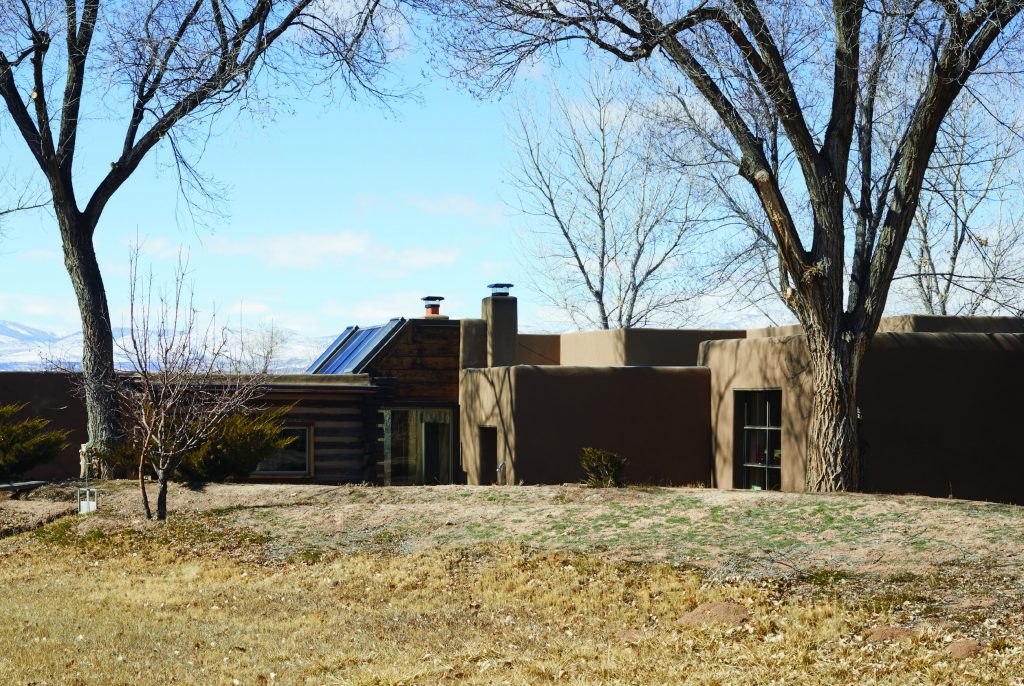
Since 2004, I have used a range of materials—from glass to stone, fiber and metal—to create woven and crochet beadwork, which I refer to as beaded cords. Japanese seed beads and often gemstones combine in my work to construct a larger mosaic. The linear character of these beaded cords lends itself to transition, and the variety of color and texture in my work offers the opportunity to create endless pattern and progression. My work is intended to be flexible, allowing the wearer to double, triple, tie and wrap the work to suit any preference.
The spirit of a piece is born in the material and technique used to make it.
The necklaces I make are at least 110 mm long and have no break, so their progressions are continuous. Color and pattern can morph as the piece’s linear pattern evolves. The animation comes from the wearer’s movement and the way light engages with the gems that embellish each piece.
For the past couple of years, I have been focusing on new patterns to comprise my abstract mosaics. I’m living in a less ordered, less predictable, softer place. Being in Jacona requires me to look at patterns that seem random and organic, even though they aren’t and can’t be. It’s the nature of the crochet process to work in a grid, but within that system, I want to create work that is more implicit, mysterious and visually unpredictable. It’s a delightful challenge.
There is a mathematical loveliness within my bead crochet, which incorporates a series of numbers that fall into place. I don’t have a literal mathematical formula that I follow, but I often notice a structured elegance and logic in a pattern that was never intended.
I’m continuously inspired by the idea of contrast, such as rustic beach pebbles next to fine diamonds. I take inspiration from color, and I love opposites coming together. The 1.5 mm beads I use allow for interesting mixes.
Every piece I create is defined by the person who wears it; it is the wearer who completes the piece when they make it their own.
I can create a rich neutral mosaic by mixing vibrant opposites, so some of my work will combine complementary colors like red and green or yellow and purple. At any distance, the eye mixes these colors, resulting in a much richer neutral than if I were to simply use a monochromatic gray. I also use combinations in a given color group: Warm, cool, bright and dull blues mix beautifully for example. I love quiet color as well, and it supports vibrantly colored gemstones.
There are aspects of bead crochet that, because of its scale, don’t read clearly. I would like to one day create a series of works on paper that show the hidden patterns in a larger scale, not diagrams or duplications of the bead crochet pieces but drawings in pencil and ink that are more like responses to the crochet. I would also like to create a series of works on paper that would pair well with the bead crochet for a future exhibition.
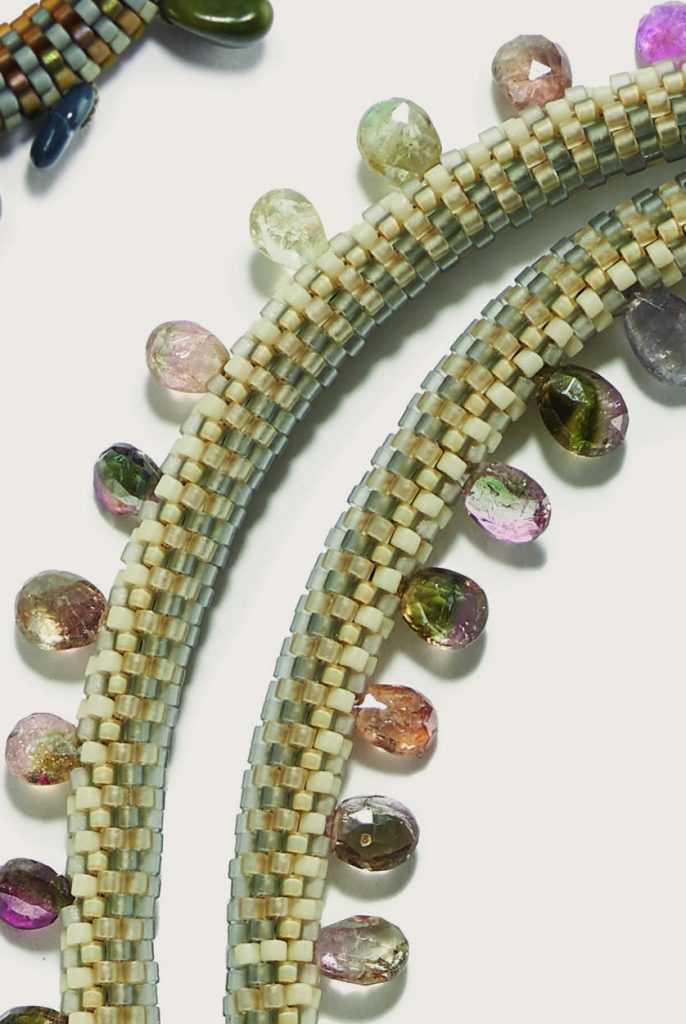
Overall, my work does not carry a specific message. Instead, I enjoy various themes in a series of pieces or in the subject of an exhibit that I work to develop with Ivan and Allison Barnett, co-owners of Patina Gallery. The seasons throughout the year often inspire certain colors and stones. Summer is usually vivid and utilizes more saturated color; winter is often more metallic. Fall, here in New Mexico, is different than in the Bay Area. Here, the colors of autumn are distinct and inspire themes of their own.
My father used to say, “Design is the art form that is incomplete until it is engaged.” The bead crochet technique provides gifts, and one of them is how tactile and supple the cords are. They are very strong, but soft to the touch, very comfortable and wearable.
“Design is the art of bringing the mind, heart and hands closer together.” – Matt Kahn
I came to beadwork because my mother had a collection of bead crochet necklaces in vibrant colors that were made in Greece. She wore them every day. I loved them and wanted to learn how to make them. I took a class at a local bead shop thinking bead crochet would be a hobby, but it developed into something more.
I left my family’s home to attend Stanford and, after graduation, worked at the San Francisco offices of the architecture firm Skidmore, Owings and Merrill. While there, I was able to explore my interest in pattern through the development of building exteriors, paving pattern, interior design and architectural graphics treatments. I started to see design as a kind of mosaic where numerous smaller units could come together to create a whole piece that would progress and change over a larger composition.

Afterwards, I went to work in water feature design for a company called WET. Our team created one-of-a-kind installations worldwide with scale and design that had never been seen before. Our installations included the Los Angeles County Music Center, the fountains at the Bellagio in Las Vegas, Nevada, along with many others comprised of hundreds and thousands of units, combining jets of water and light to create a larger, singular, kinetic water expression.
In 2016, I moved from San Francisco, California to Jacona, New Mexico, just outside Pojoaque and lived in a home designed by Mary Reeves (a local architect with an understanding of indigenous materials and craftsmanship who uses products natural to the area of Northern New Mexico). It is a modern house made with a variety of tactile and sensual materials. When I saw it, I was hooked. Elements that seem incompatible have complemented each other in this home. I think of it as a quilt of adobe, steel, stone, wood and glass. The house is also beautifully sited on a pond with pastureland and the Jemez Mountains in the distance. It is lovely and tranquil, and the environment lends much inspiration to my work.

Since 2004, I have used a range of materials—from glass to stone, fiber and metal—to create woven and crochet beadwork, which I refer to as beaded cords. Japanese seed beads and often gemstones combine in my work to construct a larger mosaic. The linear character of these beaded cords lends itself to transition, and the variety of color and texture in my work offers the opportunity to create endless pattern and progression. My work is intended to be flexible, allowing the wearer to double, triple, tie and wrap the work to suit any preference.
The spirit of a piece is born in the material and technique used to make it.
The necklaces I make are at least 110 mm long and have no break, so their progressions are continuous. Color and pattern can morph as the piece’s linear pattern evolves. The animation comes from the wearer’s movement and the way light engages with the gems that embellish each piece.
For the past couple of years, I have been focusing on new patterns to comprise my abstract mosaics. I’m living in a less ordered, less predictable, softer place. Being in Jacona requires me to look at patterns that seem random and organic, even though they aren’t and can’t be. It’s the nature of the crochet process to work in a grid, but within that system, I want to create work that is more implicit, mysterious and visually unpredictable. It’s a delightful challenge.
There is a mathematical loveliness within my bead crochet, which incorporates a series of numbers that fall into place. I don’t have a literal mathematical formula that I follow, but I often notice a structured elegance and logic in a pattern that was never intended.
I’m continuously inspired by the idea of contrast, such as rustic beach pebbles next to fine diamonds. I take inspiration from color, and I love opposites coming together. The 1.5 mm beads I use allow for interesting mixes.
Every piece I create is defined by the person who wears it; it is the wearer who completes the piece when they make it their own.
I can create a rich neutral mosaic by mixing vibrant opposites, so some of my work will combine complementary colors like red and green or yellow and purple. At any distance, the eye mixes these colors, resulting in a much richer neutral than if I were to simply use a monochromatic gray. I also use combinations in a given color group: Warm, cool, bright and dull blues mix beautifully for example. I love quiet color as well, and it supports vibrantly colored gemstones.
There are aspects of bead crochet that, because of its scale, don’t read clearly. I would like to one day create a series of works on paper that show the hidden patterns in a larger scale, not diagrams or duplications of the bead crochet pieces but drawings in pencil and ink that are more like responses to the crochet. I would also like to create a series of works on paper that would pair well with the bead crochet for a future exhibition.

Overall, my work does not carry a specific message. Instead, I enjoy various themes in a series of pieces or in the subject of an exhibit that I work to develop with Ivan and Allison Barnett, co-owners of Patina Gallery. The seasons throughout the year often inspire certain colors and stones. Summer is usually vivid and utilizes more saturated color; winter is often more metallic. Fall, here in New Mexico, is different than in the Bay Area. Here, the colors of autumn are distinct and inspire themes of their own.
My father used to say, “Design is the art form that is incomplete until it is engaged.” The bead crochet technique provides gifts, and one of them is how tactile and supple the cords are. They are very strong, but soft to the touch, very comfortable and wearable.
“Design is the art of bringing the mind, heart and hands closer together.” – Matt Kahn




